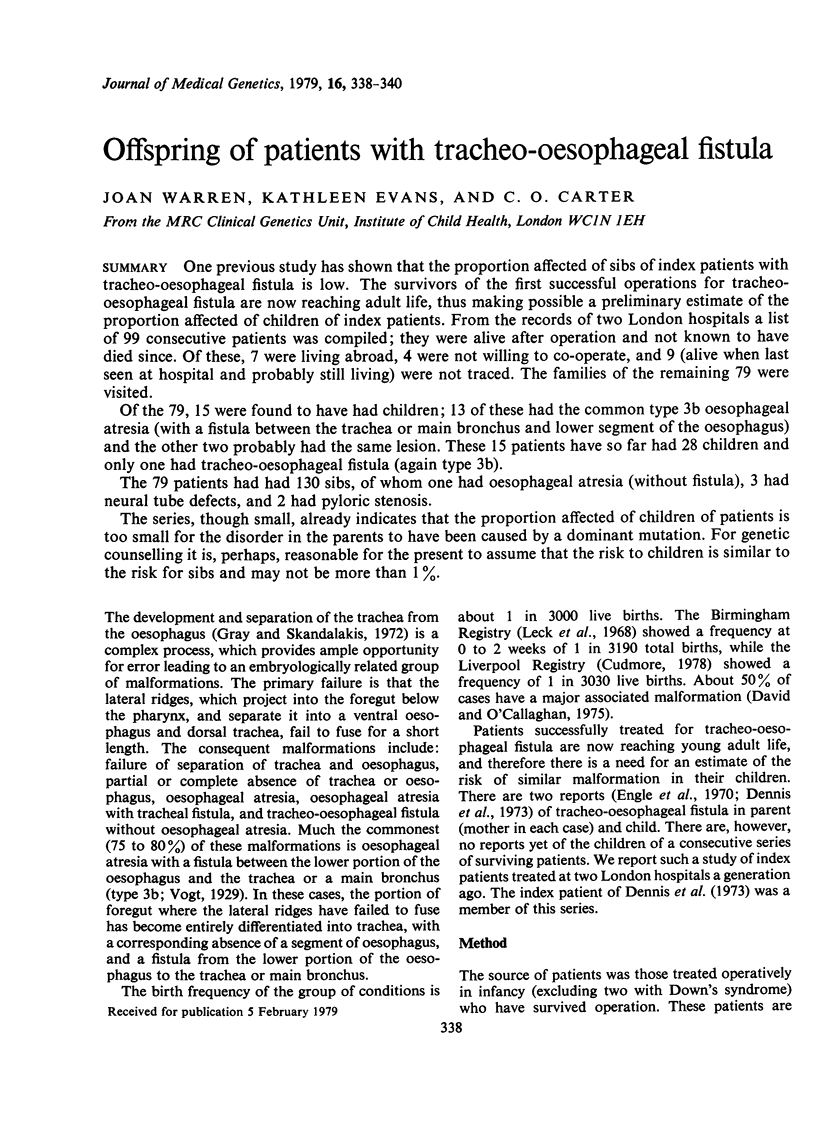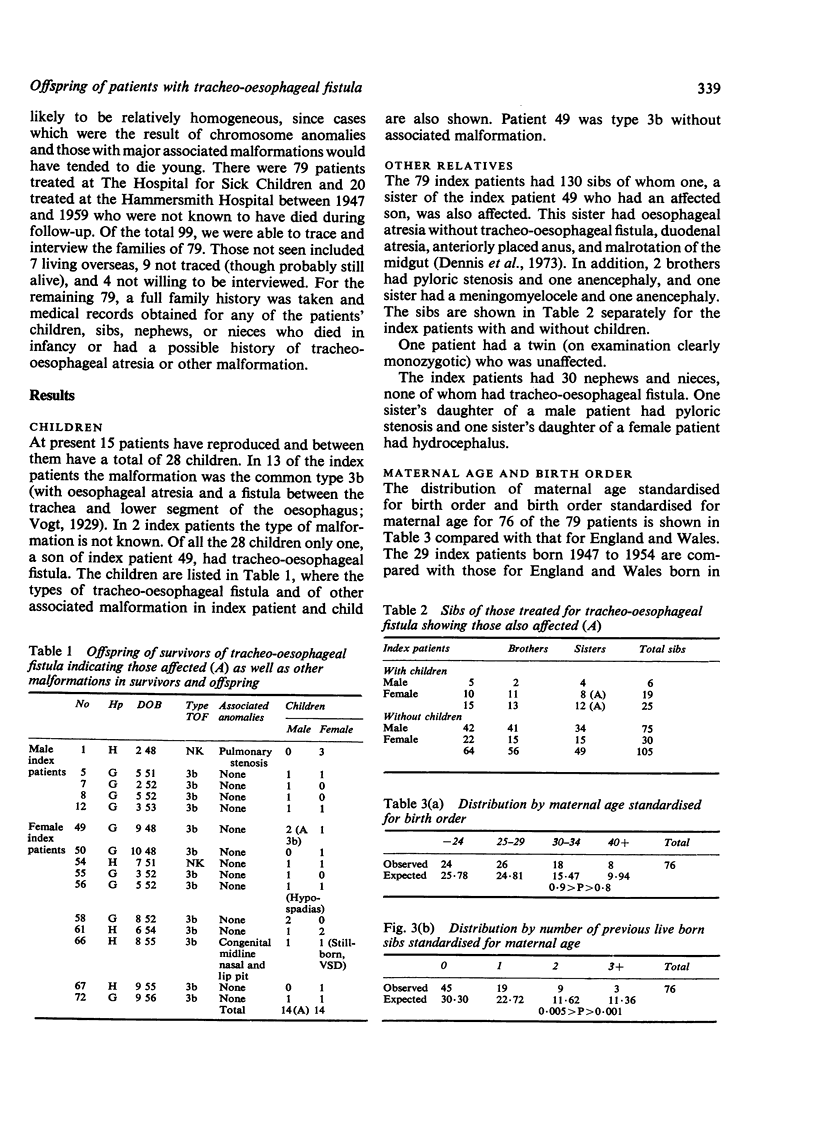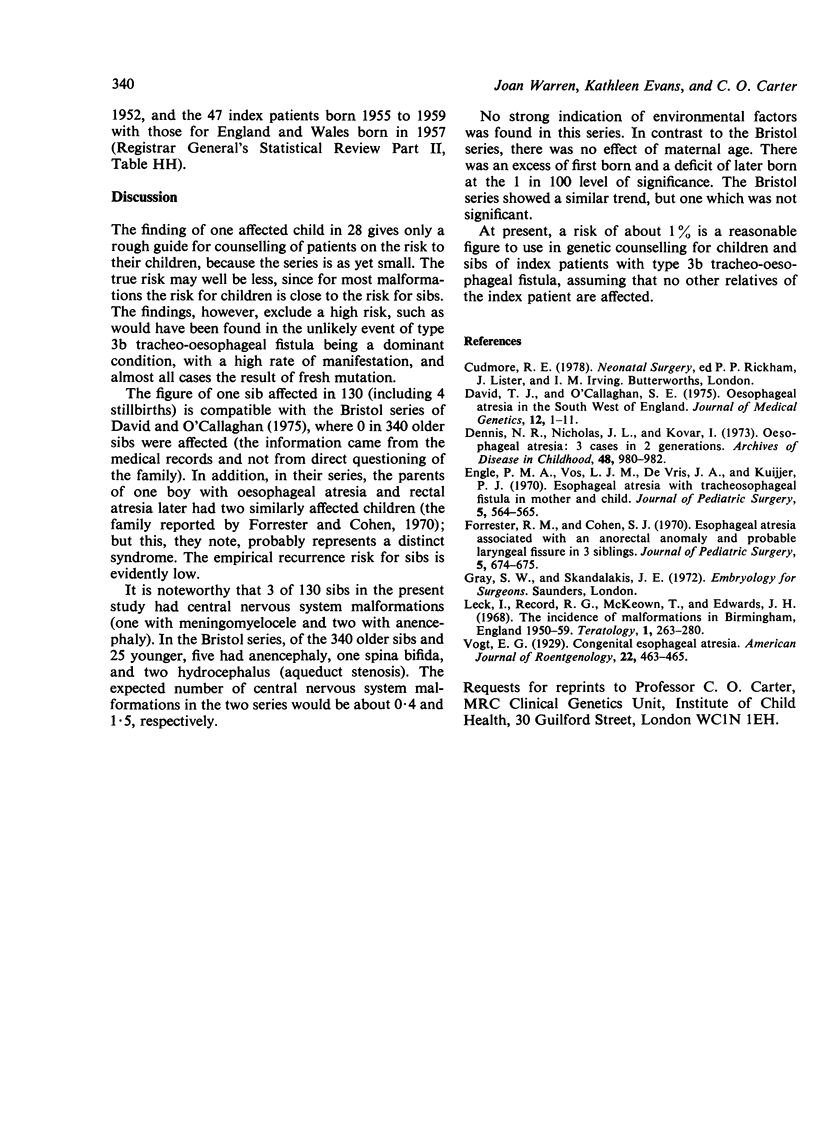Abstract
One previous study has shown that the proportion affected of sibs of index patients with tracheo-oesophageal fistula is low. The survivors of the first successful operations for tracheo-oesophageal fistula are now reaching adult life, thus making possible a preliminary estimate of the proportion affected of children of index patients. From the records of two London hospitals a list of 99 consecutive patients was compiled; they were alive after operation and not known to have died since. Of these, 7 were living abroad, 4 were not willing to co-operate, and 9 (alive when last seen at hospital and probably still living) were not traced. The families of the remaining 79 were visited.
Of the 79, 15 were found to have had children; 13 of these had the common type 3b oesophageal atresia (with a fistula between the trachea or main bronchus and lower segment of the oesophagus) and the other two probably had the same lesion. These 15 patients have so far had 28 children and only one had tracheo-oesophageal fistula (again type 3b).
The 79 patients had had 130 sibs, of whom one had oesophageal atresia (without fistula), 3 had neural tube defects, and 2 had pyloric stenosis.
The series, though small, already indicates that the proportion affected of children of patients is too small for the disorder in the parents to have been caused by a dominant mutation. For genetic counselling it is, perhaps, reasonable for the present to assume that the risk to children is similar to the risk for sibs and may not be more than 1%.
Full text
PDF


Selected References
These references are in PubMed. This may not be the complete list of references from this article.
- David T. J., O'Callaghan S. E. Oesophageal atresia in the South West of England. J Med Genet. 1975 Mar;12(1):1–11. doi: 10.1136/jmg.12.1.1. [DOI] [PMC free article] [PubMed] [Google Scholar]
- Dennis N. R., Nicholas J. L., Kovar I. Oesophageal atresia. 3 cases in 2 generations. Arch Dis Child. 1973 Dec;48(12):980–982. doi: 10.1136/adc.48.12.980. [DOI] [PMC free article] [PubMed] [Google Scholar]
- Engel P. M., Vos L. J., de Vries J. A., Kuijjer P. J. Esophageal atresia with tracheoesophageal fistula in mother and child. J Pediatr Surg. 1970 Oct;5(5):564–565. doi: 10.1016/0022-3468(70)90011-4. [DOI] [PubMed] [Google Scholar]
- Forrester R. M., Cohen S. J. Esophageal atresia associated with an anorectal anomaly and probably laryngeal fissure in three siblings. J Pediatr Surg. 1970 Dec;5(6):674–675. doi: 10.1016/s0022-3468(70)80015-x. [DOI] [PubMed] [Google Scholar]
- Leck I., Record R. G., McKeown T., Edwards J. H. The incidence of malformations in Birmingham, England, 1950-1959. Teratology. 1968 Aug;1(3):263–280. doi: 10.1002/tera.1420010305. [DOI] [PubMed] [Google Scholar]


